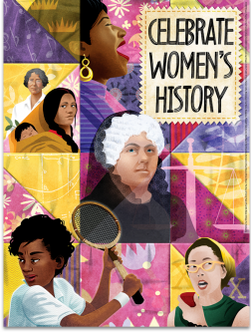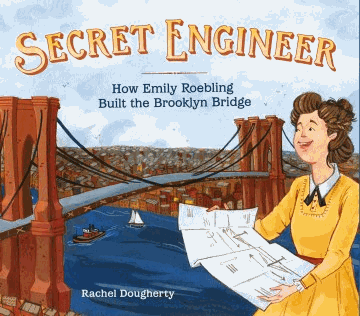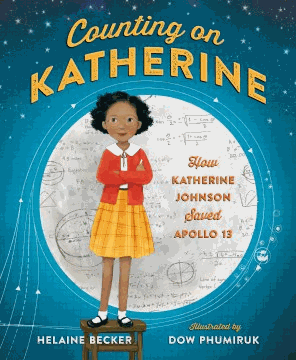Week of March 27, 2023 | TK & Kindergarten | Let's Roll
Splotch is a small bird who lives high up in a tree. One day, she lays an egg. It is small and very spotty, but Splotch thinks it is perfect in every way! This is the story of Splotch and the adventure of her roly-poly egg. Follow the dotted line and see where it goes. Along the way, find lots of animals and a butterfly on every page.
Science Connection Video When I was a little girl, I adored roly polies! Somehow, they were not creepy like other insects, and guess what? They are not true insects! Learn all about the wonderful roly poly from PBS Digital Studios.
Crafty Connection There is no right or wrong way to make your own Splotch and egg. Get some paint and blend two colors in a riotous scribble-circle for Splotch's body. Use paper cut outs to add eyes, legs, and the egg. Here is a how-to. In the library we'll create with crayons.
Let's Roll While you're waiting for paint to dry, roll around in the backyard like a roly poly!
Week of March 27, 2023 | First Grade | Spring Seeds
A seed, afraid but bored in the dark soil, decides to put out one little root, then one little shoot, before learning that there are plenty of friends around for encouragement.
We Are Growing! by Laurie Keller Walt is not the tallest or the curliest or the pointiest or even the crunchiest. A confounded blade of grass searches for his 'est' in this story about growing up.
Crafty Connections Make spring flowers with chenille stems | spring flowers coloring sheet
Week of March 27, 2023 | Second Grade | Serving Eggs Again
A crocodile hatched and raised by a mother duck must come up with a plan to save his family when a trio of bad crocodiles try to convince him to serve up his relatives for their dinner.
Video Jacana dad rescues his chicks from a crocodile
Crafty Connection Spring flowers coloring sheet
At-Home Extension Make simple egg carton chicks from the instructions found at wikihow.com.
Week of March 27, 2023 | Third Grade | Women in Science
Ada Lovelace (1815-1852) was fascinated by numbers as a child and is considered by many to be the mother of computer programming. In 1953, more than a century after her death, her notes on Charles Babbage's Analytical Engine were republished. The engine has now been recognized as an early model for a computer and her notes as a description of a computer and software.
Video Ada Lovelace
Video The Babbage Difference Engine
Crafty Connection Color by number sheet
Week of March 27, 2023 | Fourth Grade | Women in Science
Emily Warren Roebling (1843-1903) was way ahead of her time. As a young girl she studied math and science. Her husband was the chief engineer of the suspension bridge spanning the East River but when he became incapacitated after contracting "the bends" Emily became his go-between for the remaining years that it took to complete the project, teaching herself to interpret plan equations and drawings.
Video Construction of the Brooklyn Bridge on HistoryPod
Crafty Connection Brooklyn Bridge coloring sheet
Week of March 27, 2023 | Fifth Grade | Women in Science
From an early age Katherine (1918-2020) loved numbers. She was ready for high school at age 10, but her West Virginia hometown was segregated and there was no high school for Black children. Her family moved to another town and Katherine graduated from a Black high school there by age 14. She began a career as a human computer in the early 1950s for the National Advisory Committee on Aeronautics (which later became NASA) earning the trust of the astronauts with her competency and creativity.
The Boy Who Loved Math by Deborah Heiligman. At the age of four Paul Erdos (1913-1996) could ask you when you were born and then calculate the number of seconds you had been alive in his head. But he didn't learn to butter his own bread until he turned twenty!
Video N Is a Number: a Portrait of Paul Erdos (trailer)
Having an Erdos Number Paul Erdos published papers with 507 coauthors. In the mathematics community those 507 people have the coveted distinction of having an Erdos number of 1, meaning that they wrote a paper with Erdos himself. Someone who published a paper with one of his coauthors is said to have an Erdos number of 2, and an Erdos number of 3 means that someone wrote a paper with someone who wrote a paper with someone who worked with Erdos. Albert Einstein’s Erdos number was 2. The highest known Erdos number is 15; this excludes non mathematicians, who all have an Erdos number of infinity.
Website Magical Answer to an 80-Year-Old Puzzle. Terence Tao, now a math professor at UCLA, was a youngster when he met Erdos, earning his Erdos number of 1.
Crafty Connection Cat tessellation coloring sheet
Crafty Extensions Create an easy cat tessellation or go all the way and create your own tessellation art with worksheet and video demonstration.
Extension Paul Erdos International Math Challenge























 RSS Feed
RSS Feed